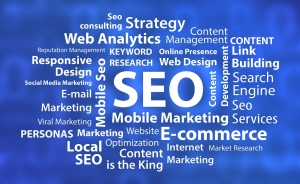Did you know that the use of images and the addition of the correct tags can play a crucial role in achieving excellent search engine results? Search engines such as Google are trying to incorporate more images into their results and for e-commerce websites in particular, getting rankings on Google images can offer a great way of drawing visitors to your website.
How To Optimise Your Images?
By simply following a few basic guidelines, you will be able to take the required steps towards ensuring your images work for you. Following a few  simple guidelines can help ensure your images are working hard for your SEO.
simple guidelines can help ensure your images are working hard for your SEO.
1) Choose The Right Image: Finding the most appropriate image is the most important part. A good image which attracts attention and describes itself can really do the job for you. Steer clear of irrelevant images – this can have the opposite effect.
2) Utilise The Alt Tags: Alt tags displays the text in-case the image is not able to load in the browser helping users to know the details of the image. It not only helps the users but also acts as a base for search engines in identifying what the image contains. The Alt tag must be direct and succinct – avoid lengthy descriptions and keyword stuffing.
3) Re-Name Your Images: Using a file name that is relevant but is none generic means you will ensure the right sort of traffic are coming across your content. If your file name is too generic, you may end up with non-relevant visitors to your site – potentially skewing your site stats. The above example has been named “Houses of Parliament at Night” – relevant, but not too generic a title.
4) Re-Size Your Images (Where Necessary): Google considers the page loading time as one of the important ranking factors, which will be dictated by the size of the page (image file size, video size, etc). Optimizing images in terms of size can really improve your site performance. File size depends on the resolution of the image, the higher the resolution the bigger the file size. So you need to maintain a balance between the size and the quality. There are different image types supported (JPEG, PNG, GIF) on the web, and choosing the best will depend on your requirement. Try and choose a image which is of good quality and lowest file size. Very high resolution images will be huge and, as such, should be avoided.
dictated by the size of the page (image file size, video size, etc). Optimizing images in terms of size can really improve your site performance. File size depends on the resolution of the image, the higher the resolution the bigger the file size. So you need to maintain a balance between the size and the quality. There are different image types supported (JPEG, PNG, GIF) on the web, and choosing the best will depend on your requirement. Try and choose a image which is of good quality and lowest file size. Very high resolution images will be huge and, as such, should be avoided.
Why Is It Important To Do This?
- Search engines can detect an image but not what the image is. This makes it difficult for them to sort out images based on user query.
- Images have now been added to the main page search results in Google resulting in a potential for more traffic.
- Images can break up text blocks are are better at enticing people into your site.
- Images can also act as link bait if you allow image sharing in exchange of a link.
- Image sharing is more prolific among users with sites like Pinterest getting more popular.
Further Information
Footprint specialise in creating bespoke websites, designed to help take your business to another level. If you’d like to speak to us regarding any of our services, give us a call on 01883 372488 or contact us via Facebook and we’ll be happy to talk you through your options.

